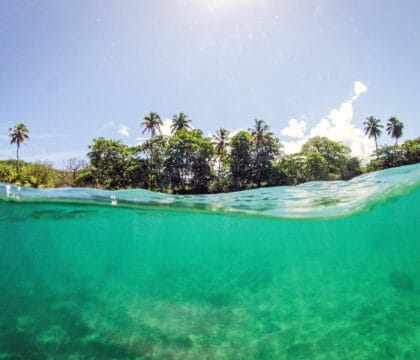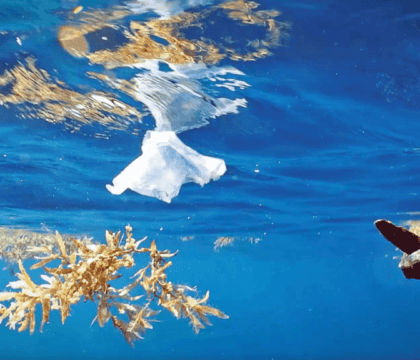November 23, 2016 • News Announcements, Program Updates
[IMAGE]
So much good can be done when a little group of people applies their energy to helping the ocean and its coastal caretakers.
So here’s the sugar:
I just got back from an inspiring conference about marine mammal protected areas and an even more inspiring visit to Barra de Potosí. I spent the day on the water with our superstar intern, Andrea García Chavez, who is now a biology teacher at a great local high school in Zihuatanejo. She and her students are conducting marine mammal surveys every week, making a museum exhibition of their pictures, and will be presenting their work at a conference in Mexico City next spring. Of course her kids are ALSO now madly in love with the ocean and want to do everything they can to protect it.
This morning, I received a phone call from our captain, Arturo Mellin, with pictures of the first humpback whale sighting of the season. Woohoo! It’s ON!
[IMAGE]
And the icing on the cake? It’s year FOUR, guys! We have accomplished so much in a very short time.
A few improvements:
- Ecotourism is up. Beach rentals are booking up months in advance, the women in the village are pumping out art to sell and fishermen are requesting training and materials about whales and dolphins to provide high quality tours.
- Litter is down. The beach and the village looks cleaner than I’ve ever seen it.
- Kids are proud of and in love with the local marine mammals. Grown ups are, too!
- The community’s leaders want to find a way to work together to protect their marine environment.
Current pressing concerns:
- The government put in a concrete road in the village with no provision for drainage and cut down or pruned a lot of the trees this week. This is going to make it hotter in the village and flooding in the summer rain season could become a real problem.
- The fishery continues to decline. Locals are very worried about their future, especially those who make their living mainly from fishing.
- The lagoon will probably close early this year and waste water entering the lagoon through the sand, mostly from the busy beach restaurants, will make people, fish and other wildlife sick.
Based on that, here is the plan for 2017:
- Run the 4th 300-hour marine mammal survey. (This is an intended 5-year study). We will hire three local fishermen to collect data, including DSLR camera photography, data collection and entry, mapping, analysis and presentation. Three graduate student marine biologist volunteers will work alongside the fishermen and teach them these skills.
- Teach local marine biology programs at 12 schools in 5 towns and cities, reaching 1000+ kids. Offer a minimum of 1 workshop/week at the library in Barra de Potosi. Bring local Barra kids and high school kids from Zihutanejo aboard our boat to study wildlife with us.
- Share our discoveries and information about the rich marine wildlife in our region at public events at least once/week, including on the radio, television, through the newspaper, at the eco-tianguis, at hotels and in other public places and gatherings to reach 200,000+ people.
- Teach 35+ guides and fishermen about whales, dolphins and responsible boat operation in a two-day intensive training program.
- Increase ecotourism in our region through our expeditions and outreach programs.
- Bring 14 community thought leaders from our region to Baja for a fishermen’s cultural exchange in San Ignacio Lagoon, Cabo Pulmo and Punto Abreojos. Our group will experience first-hand examples of thriving ecologies and financial success as a result of responsible community managed stewardship.
- Work with our community to make a long-term conservation plan for our region, based on what we have seen and discussed locally and in Baja.
So what do we need to pull this off? Your support, friends.
I’ve managed to secure some of our funding through grants but we still need $9000 in individual donations by the end of this year to make the above ‘to do’ list happen.
Now is the time for action.
While it is still possible, before it is too late.
Will you please help this precious little place on earth become a world example of how an endangered fishing community can turn around and save itself?
How to help:
1.) Please make a tax-deductible donation to the Whales of Guerrero Research Project today through our fiscal sponsor, Oceanic Society. http://whalesinmexico.com/donate.htm
Your donation goes a looooong way! For example:
- $50 feeds our team of 6 for a day.
- $300 covers a week of gas for the boat
- $1500 supports a local fishermen for an entire season of field work and scientific training
- $2000 pays for one of our community leaders to go to Baja and have their mind blown by conservation success examples
2.) Join us on a week-long research expedition.
Come play with whales, eat guacamole, sing funny songs with adorable children, help to support the village, science and save the planet. We have a few spots left in our expeditions in February and March. Venga!
3.) Give someone you love a whale-sized present this year. Adopt one of our whales and track its progress and re-sightings as it pops up in other places in Central America, Mexico, California, Oregon, Washington and Canada. Your adoption fee supports our work.
4.) Buy whale merch! Get your marine mammals on! Get your t-shirts, water bottles and stickers here.
Most of all, take heart, friends. Know that we are out here, working together to make things better. I can’t do it without you and I am grateful for your support and for the opportunity to do the work every day.
Thanks so much for being a part of it.
[IMAGE]




